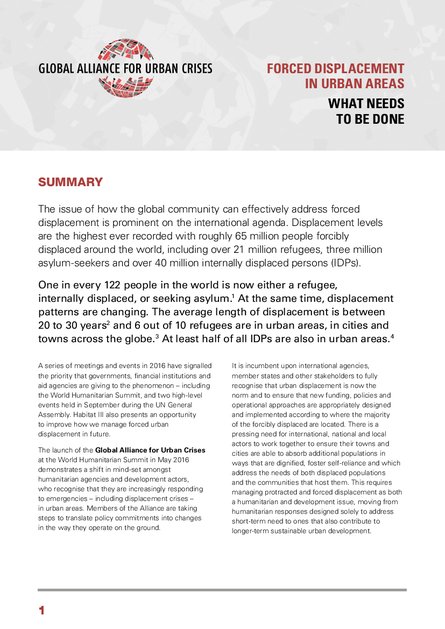
The issue of how the global community can effectively address forced displacement is prominent on the international agenda. Displacement levels are the highest ever recorded with roughly 65 million people forcibly displaced around the world, including over 21 million refugees, three million asylum-seekers and over 40 million internally displaced persons (IDPs).
One in every 122 people in the world is now either a refugee, internally displaced, or seeking asylum. At the same time, displacement patterns are changing. The average length of displacement is between 20 to 30 years and 6 out of 10 refugees are in urban areas, in cities and towns across the globe. At least half of all IDPs are also in urban areas.
A series of meetings and events in 2016 have signalled the priority that governments, financial institutions and aid agencies are giving to the phenomenon – including the World Humanitarian Summit, and two high-level events held in September during the UN General Assembly. Habitat III also presents an opportunity to improve how we manage forced urban displacement in future.
Links
Resource collections
- UN Habitat - Urban Response Collection
- Urban Response - Urban Crisis Preparedness and Risk Reduction
- Urban Response Collection - Community Engagement and Social Cohesion
- Urban Response Collection - Economic Recovery
- Urban Response Collection - Environment and Climate Change
- Urban Response Collection - Housing, Land and Property
- Urban Response Collection - Urban Crisis Response, Recovery and Reconstruction
- Urban Response Collection - Urban Resilience
